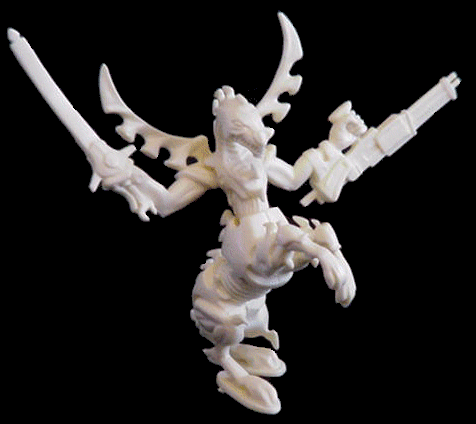
|
|
|||||||
 |
||||||||
| 3-4 Players | 1-2 hours |
|
Concept: The island of Catan is ready to be colonized. Players assume the role of colonies that are vying for control of Catan's resources. Every colony's goal is to become the largest on Catan. |
|
|
Gameplay: The board is built from 19 hexagonal pieces. Each hex represents a different type of land: desert, mountains, hills, fields, pastures, and forests. Catan is an island, so there are hexes representing water and harbors, too. Upon each land hex (except the desert), a number marker is placed -- these will govern the resources during gameplay. The Robber pawn is placed on the desert hex. Each land type (except the desert) produces a different resource in the game: forest = lumber; pasture = wool; fields = grain; hills = bricks; mountains = ore. The desert produces nothing. Players begin by placing a settlement with one road at the junction of three hexes. After all players have placed the first settlement, players repeat the process in the reverse order for a second settlement and road combination. Players receive the resources produced by their second settlement to start the game. Each settlement is worth one victory point, the goal is to reach ten victory points. Each city is worth two victory points, but building or upgrading requires resources. A players turn goes as follows:
When the dice are rolled for resource production, the total of the dice determines the one or two hexes that produce resources on that turn. Any player with a settlement or city bordering the producing hex will receive the resource that that hex produces. If a seven (7) is rolled, no hex produces any resource, and the Robber is activated. Any player with more than seven resource cards must discard half of them; the Robber is moved to a new hex (any except the desert) by the player who's turn it is. The player moving the robber may steal a random resource from any one player whose settlement borders the hex with the Robber. Any hex containing the Robber pawn will not produce any resources until the robber is moved away. |
|
| Winning Conditions:
|
|
| Our Opinion:
The trading of resources in this game is what a Monopoly game could only dream about. The players simply must interact in order to succeed. In each game we played (and we played four times in one month), certain resources became so scarce that a player who managed to acquire an extra for trade could literally name their price for a trade and get it -- it was true capitalism in action. There aren't many difficult rules to remember. There isn't any difficult math to perform. The simplicity of the rules makes it fast to learn and very playable. We only noticed two items about the game that any of the zombies could complain about -- the first was that the resources are governed by dice rolls... in each game, at least one player would manage to fall behind due to bad luck on the dice rolls. The second item was a minor rule presentation problem. If you know the rules to "The Settlers of Catan," and you look carefully at our "in play" pictures above, you will notice a rules violation by the yellow player. There is a rule that says that no two settlements may be adjacent to each other, there must be at least one open intersection (of hexes) between them. In the game overview and rule book, this rule is hidden in the text of a paragraph about settlements. It is not obvious. But, when you read the "Almanac," the "distance rule" has its own section in which this rule is spelled out nicely. Our first three games had been tainted by this rule being missed. When we played again with this rule in effect, strategies became much more difficult, and no one player could dominate as easily as our first games. All of our players really enjoyed this game. It is limited to three or four players, but there are expansion sets to add two more. This game is very fun, we liked it a lot -- we think that you will, too. |
|
| Where to buy: Any local Game or hobby store -- Our copy was from a Wizards of the Coast outlet. |
|
 |
|
 Other Reviews Other Reviews |
Zombie Main page |
|
|